#Bill Becher
Explore tagged Tumblr posts
Text
𝒜𝒻𝓉𝑒𝓇 𝒶 𝒹𝑒𝓋𝒶𝓈𝓉𝒶𝓉𝒾𝓃𝑔 𝒶𝓉𝓉𝒶𝒸𝓀 𝒷𝓎 𝒶 ℛ𝒶𝓏𝑜𝓇𝒷𝒶𝒸𝓀 𝓌𝒾𝓁𝒹 𝒷𝑜𝒶𝓇 𝒾𝓃 𝒶𝓃 𝑒𝓁𝒹𝑒𝓇𝓁𝓎 𝓂𝒶𝓃'𝓈 𝒽𝑜𝓊𝓈𝑒, 𝒽𝑒 𝒽𝒶𝓈 𝓋𝑜𝓌𝑒𝒹 𝓉𝑜 𝒻𝒾𝓃𝒹 𝓉𝒽𝑒 𝒷𝑒𝒶𝓈𝓉 𝓉𝒽𝒶𝓉 𝓀𝒾𝓁𝓁𝑒𝒹 𝒽𝒾𝓈 2 𝓎𝑒𝒶𝓇 𝑜𝓁𝒹 𝑔𝓇𝒶𝓃𝒹𝓈𝑜𝓃. 𝒜𝓃 𝑒𝓃𝓋𝒾𝓇𝑜𝓃𝓂𝑒𝓃𝓉𝒶𝓁𝒾𝓈𝓉 𝒶𝓃𝒾𝓂𝒶𝓁 𝓇𝒾𝑔𝒽𝓉𝓈 𝓇𝑒𝓅𝑜𝓇𝓉𝑒𝓇, 𝗕𝗲𝘁𝗵 𝗪𝗶𝗻𝘁𝗲𝗿𝘀 (𝐉𝐮𝐝𝐲 𝐌𝐨𝐫𝐫𝐢𝐬) 𝓂𝒶𝓀𝑒𝓈 𝒽𝑒𝓇 𝓌𝒶𝓎 𝒹𝑜𝓌𝓃 𝓉𝑜 𝓉𝒽𝑒 𝓉𝑜𝓌𝓃 𝑜𝒻 𝐆𝐚𝐦𝐮𝐥𝐥𝐚 𝐀𝐮𝐬𝐭𝐫𝐚𝐥𝐢𝐚 𝑜𝓃 𝒶 𝓇𝑒𝓅𝑜𝓇𝓉 𝑜𝒻 𝓉𝒽𝑒 𝓇𝑒𝒸𝑒𝓃𝓉 𝒽𝓊𝓃𝓉𝒾𝓃𝑔 𝑜𝒻 𝒦𝒶𝓃𝑔𝒶𝓇𝑜𝑜'𝓈 𝒶𝓃𝒹 𝓌𝒶𝓃𝓉𝓈 𝓉𝑜 𝑔𝑒𝓉 𝓉𝒽𝑒 𝒾𝓃𝓅𝓊𝓉 𝑜𝓃 𝓉𝒽𝑒 𝓈𝓊𝒷𝒿𝑒𝒸𝓉 𝒻𝓇𝑜𝓂 𝓁𝑜𝒸𝒶𝓁 𝒽𝓊𝓃𝓉𝑒𝓇𝓈 𝒷𝓊𝓉 𝓁𝒾𝓉𝓉𝓁𝑒 𝒹𝑜𝑒𝓈 𝓈𝒽𝑒 𝓀𝓃𝑜𝓌 𝒶𝒷𝑜𝓊𝓉 𝓉𝒽𝑒 𝓉𝓇𝓊𝑒 𝒽𝑜𝓇𝓇𝑜𝓇𝓈 𝓉𝒽𝒶𝓉 𝑔𝑜 𝑜𝓃 𝒾𝓃 𝓉𝒽𝒾𝓈 𝓈𝓂𝒶𝓁𝓁 𝓉𝑜𝓌𝓃. 𝗠𝗿𝘀. 𝗪𝗶𝗻𝘁𝗲𝗿𝘀 𝓈𝓉𝒶𝓇𝓉𝓈 𝓉𝑜 𝒻𝒾𝓃𝒹 𝓂𝑜𝓇𝑒 𝓉𝒽𝒶𝓃 𝓈𝒽𝑒 𝓌𝒶𝓃𝓉𝓈 𝓌𝒽𝒾𝓁𝑒 𝑜𝓃 𝒽𝑒𝓇 𝓇𝑒𝓈𝑒𝒶𝓇𝒸𝒽 𝒶𝓈𝓈𝒾𝑔𝓃𝓂𝑒𝓃𝓉. 𝒜𝓈 𝓉𝒾𝓂𝑒 𝑔𝑜𝑒𝓈 𝒷𝓎, 𝒽𝑒𝓇 𝒽𝓊𝓈𝒷𝒶𝓃𝒹 𝗖𝗮𝗿𝗹 𝗪𝗶𝗻𝘁𝗲𝗿𝘀 (𝐆𝐫𝐞𝐠𝐨𝐫𝐲 𝐇𝐚𝐫𝐫𝐢𝐬𝐨𝐧) 𝓂𝒶𝓀𝑒𝓈 𝒽𝒾𝓈 𝓌𝒶𝓎 𝒹𝑜𝓌𝓃 𝓉𝑜 𝓉𝒽𝑒 𝓉𝑜𝓌𝓃 𝑜𝒻 𝐆𝐚𝐦𝐮𝐥𝐥𝐚 𝒶𝒻𝓉𝑒𝓇 𝒽𝑒 𝓇𝑒𝒸𝒾𝑒𝓋𝑒𝓈 𝓇𝑒𝓅𝑜𝓇𝓉𝓈 𝑜𝒻 𝒽𝑒𝓇 𝒷𝑒𝒾𝓃𝑔 𝒾𝓃 𝒶 𝓉𝓇𝒶𝑔𝒾𝒸 𝒶𝒸𝒸𝒾𝒹𝑒𝓃𝓉 𝒷𝓊𝓉 𝒽𝑒 𝓌𝒶𝓃𝓉𝓈 𝓉𝑜 𝒻𝒾𝓃𝒹 𝑜𝓊𝓉 𝓂𝑜𝓇𝑒, 𝒷𝑒𝑔𝒾𝓃𝓃𝒾𝓃𝑔 𝒽𝒾𝓈 𝑜𝓌𝓃 𝒾𝓃𝓋𝑒𝓈𝓉𝒾𝑔𝒶𝓉𝒾𝑜𝓃 𝑜𝒻 𝓉𝒽𝑒 𝓉𝑜𝓌𝓃 𝒶𝓃𝒹 𝒾𝓉'𝓈 𝒷𝑒𝒶𝓈𝓉𝓁𝓎 𝓈𝑒𝒸𝓇𝑒𝓉.
#Razorback (1984)#Horror/Natural Horror#Gregory Harrison#Judy Morris#Bill Kerr ✝︎#Arkie Whiteley ✝︎#Chris Haywood#David Argue#John Howard#Mervyn Drake#Don Lane ✝︎#John Ewart ✝︎#Redmond Phillips ✝︎#Alan Becher ✝︎#Jinx Lootens
3 notes
·
View notes
Text
Letters from Watson, the Engineer's Thumb
Crimes in Context: Counterfeiting, circa 1889
What coins were the Stark-Becher gang trying to make, anyway? And did they actually need a person squishing hydraulic press to do it?
Most of the cash in circulation in Victorian England would have been coins, so it's time to refresh our memories on what they all are, since I last addressed currency smaller than a pound in The Man with the Twisted Lip. We will be restricting ourselves to denominations that the Stark-Becher gang may have been minting, based on the comment that the hydraulic press was necessary to make coins that were previously minted in silver.
Imperial Currency Definitions
Pound/Quid/Sovereign: Not applicable, the Sovereign coin is gold, but it's the base unit of the currency we're dealing with. It also would have been hard to pass as genuine just because it's a large denomination - the era's equivalent of a hundred dollar bill. Indeed, our Bank of England inflation calculator returns a modern value of £107.
Crown: Five shillings / a quarter pound. Represented by a silver coin. Probably the largest coin you'd make change for without being annoyed by it.
Shilling: 1/20th of a pound. A silver coin. Crowns and Shillings are our most likely candidates, as they're in common use in 1889 and is the kind of cash an average man might have on hand. I personally think shillings are the most likely coin to counterfeit, as a lot of accounting of people's wages, expenses, etc. in this time period is written as pounds / shillings / pennies (L/s/d) and silver pennies (And their horrible spawn of sixpence, twopence, etc) are probably not worth the effort. Also, while there were silver pennies in circulation, the fact that things like silver twopence were minted for maundy money makes the timeline and consistency of their minting beyond my pay grade as a blogger. And probably confusing for a coiner to get exactly right, given the payoff. Hydraulic press:
Modern (paper*) money is printed with several aspects that make it harder to reproduce: the exact fiber content of the paper, the multi layered and detailed design (with parts that can only be seen under UV light, parts that can only be seen with a magnifying glass, etc.), the embossed parts of the print design, and the exact chemical components of the ink can be analyzed to see if a note is authentic. The ink in US dollars also contains a smattering of heavy metals that aren't great for human health, so I don't recommend consuming money in any way - don't lick it, don't snort things off it, don't put it in your blender for a science fair project. It would be chemically somewhat dangerous to counterfeit modern currency at home, assuming you got anywhere close to the right ink.
*Some countries use polymer, but same difference. It will kill your blender, though.
The Victorians did... none of that, really. The idea of designing money to be harder to fake was already around, but metal coins can only be produced to a certain degree of precision with the tools that were available in the 1800's: you essentially heat a disk of the correct metal (a blank) and press it with a stamp. The hydraulic press would, of course, squash blanks between two plates of stamps precisely, and with great force.
Both silver and gold have relatively low melting points (under 2,000 degrees F / close to 1,000 C) and are malleable at lower temperatures than the iron or steel of a hydraulic press. Silver amalgam (a silver/mercury alloy) has an even lower melting point, so it would be even easier to fit to a mold.
Essentially, anybody who knew much about molding metal and could get a precise-ish model of the coin in question would make pretty convincing money. A hydraulic press large enough to fit three grown men between the plates of may have been overkill.
22 notes
·
View notes
Text
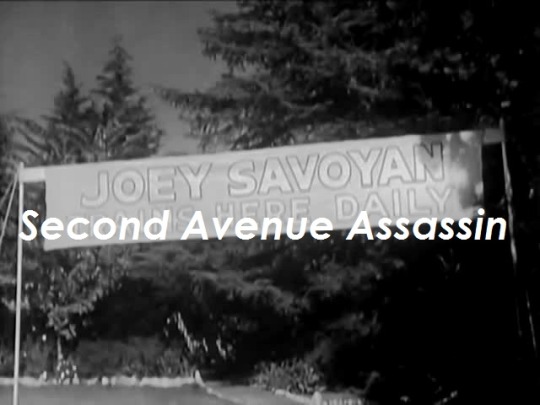
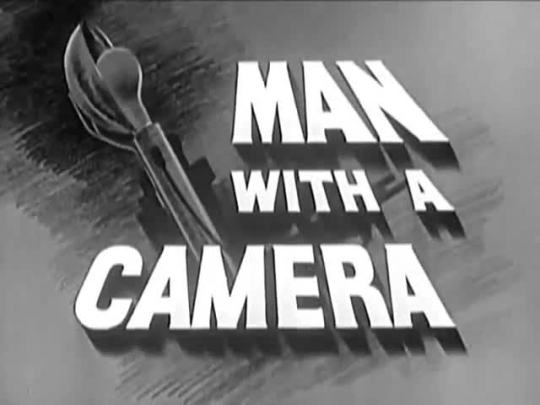
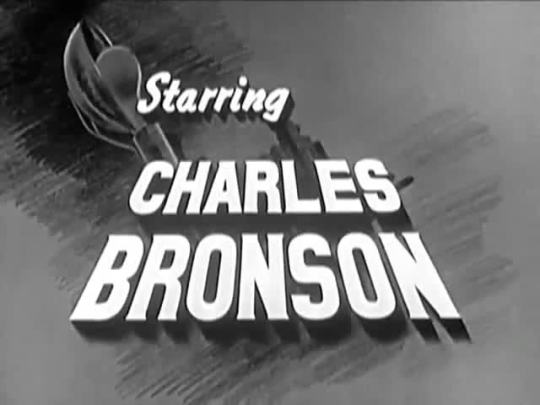


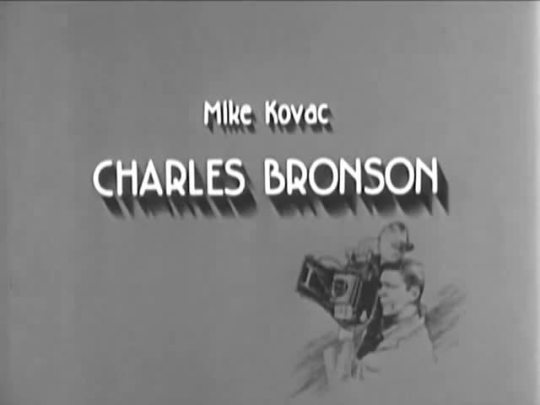
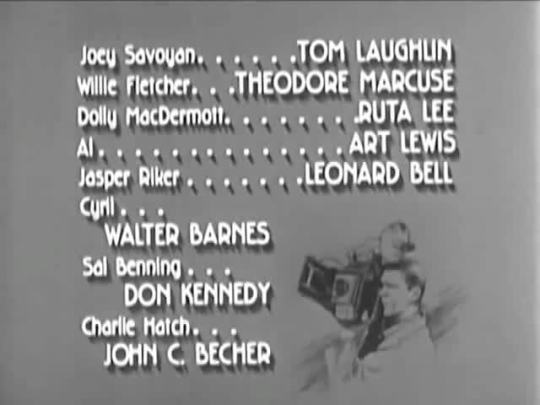
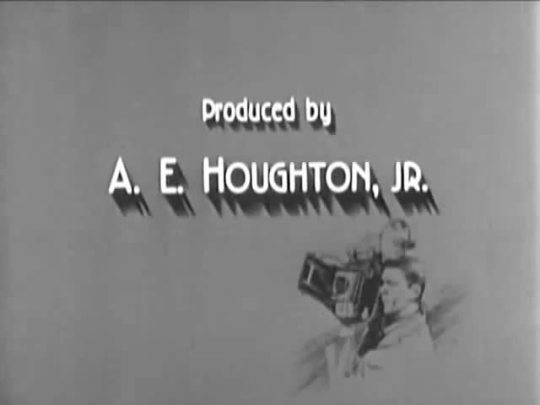

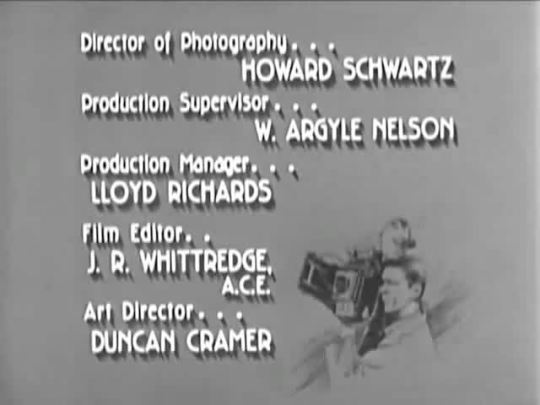
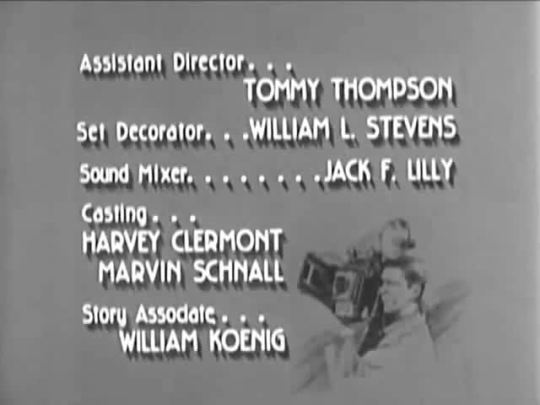
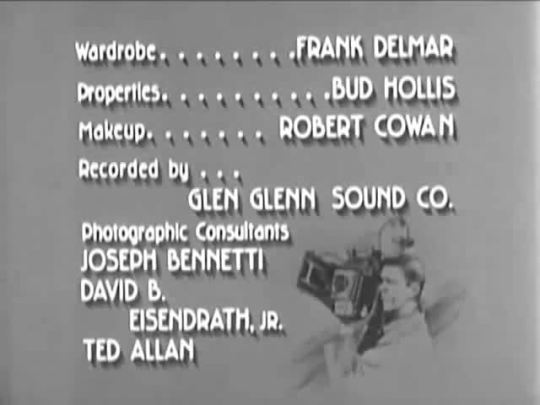
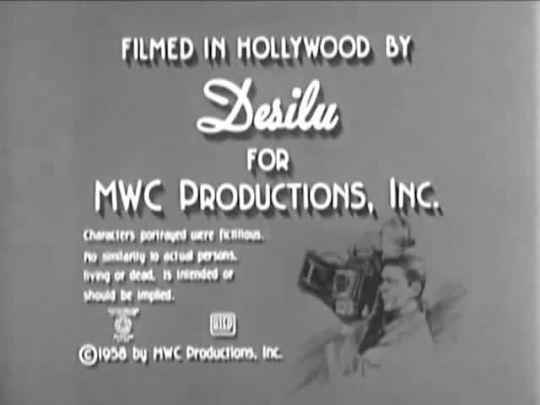

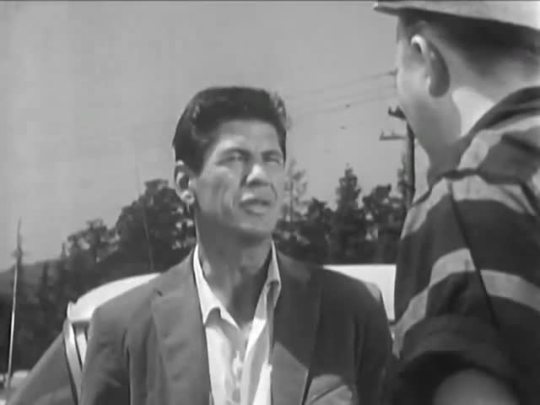
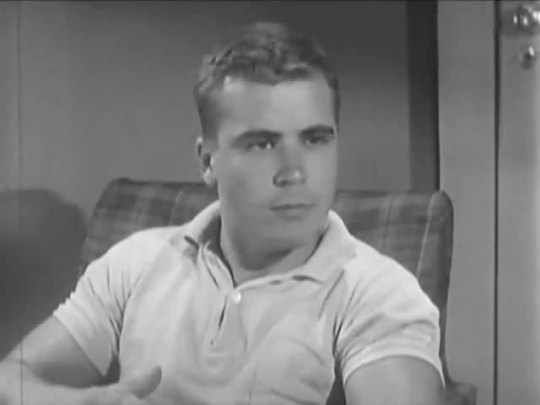
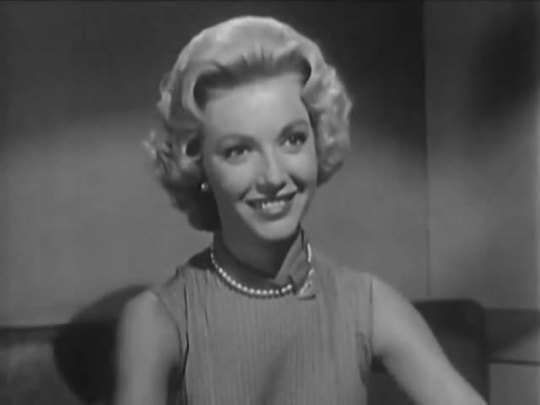

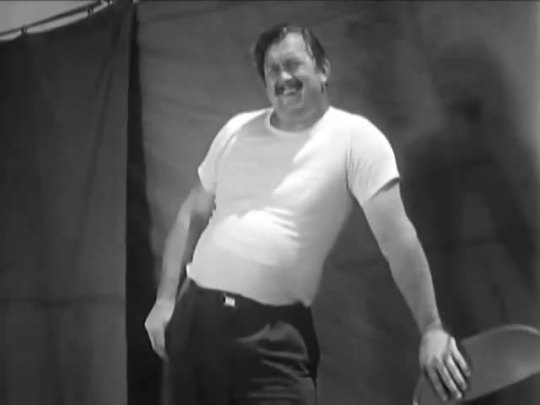
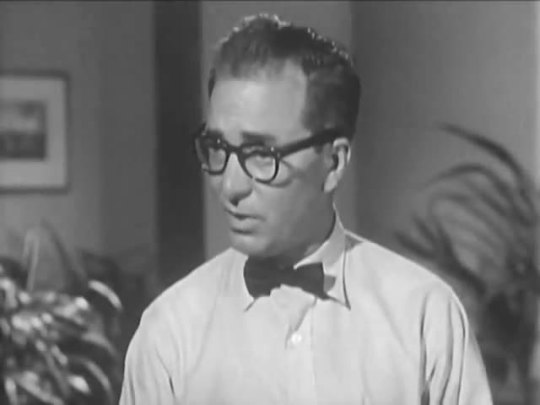
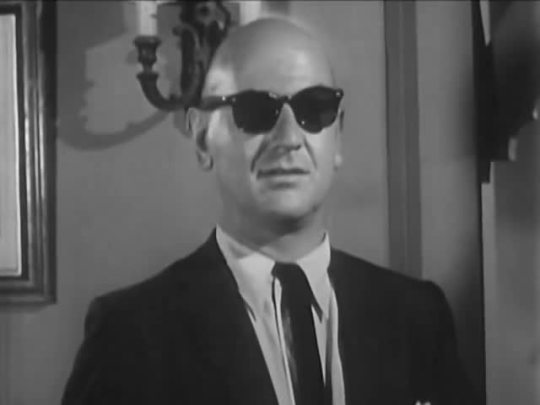
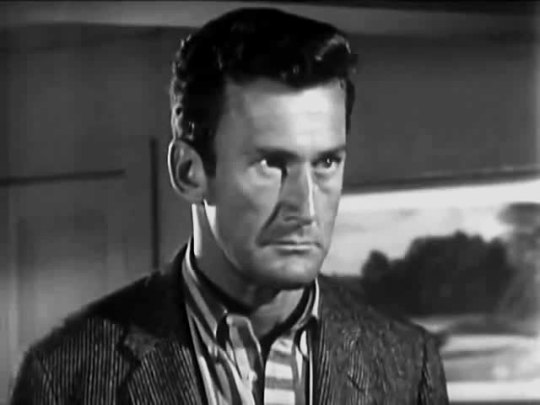
From the Golden Age of Television
Series Premiere
Man with a Camera - Second Avenue Assassin - ABC - October 10, 1958
Drama
Running Time: 30 minutes
Written by William Fay
Produced by A. E. Houghton Jr.
Directed by Gerald Mayer
Stars
Charles Bronson as Mike Kovac
Tom Laughlin as Joey Savoyan
Ruta Lee as Dolly MacDermot
Theodore Marcuse as Willy Fletcher
Art Lewis as Al
Leonard Bell as Jasper Riker
Walter Barnes as Cyril
Don Kennedy as Sal Benning
John C. Becher as Charlie Hatch
This was the only TV series that Charles Bronson had top billing.
#Second Avenue Assassin#Man with a Camera#TV#1950's#1958#Drama#ABC#Charles Bronson#Tom Laughlin#Ruta Lee#Theodore Marcuse#Series Premiere
0 notes
Text
Character Tags (12/2/24)
Aka the massive tag breakdown to get super specific lol
The Mechanisms
Gunpowder Tim, Jonny D'ville, Nastya Rasputina, Ashes O'Reilly, Marius Von Raum, Ivy Alexandria, The Toy Soldier, Toy Soldier, Drumbot Brian, Raphaella La Cognizi, Doctor Carmilla
mordred hnoc, mordred, the pendragons, arthur pendragon, lancelot pendragon, guinevere pendragon, galahad hnoc, arthur hnoc, merlin hnoc, gawain hnoc, ulysses, hades udad, (several posts mention "the oracle of delphi" but are not tagged as such and left as drumbot brian), loki tbi, sigyn tbi, lyfrassir edda, bertie the mechanisms
timraph, hearteyes, two of hearts
mechs performance, ben below, ouatis, tbi, hnoc, udad, ttbt, jonny without the waistcoat
Falsettos
Whizzer Brown, Marvin Falsettos, Mendel Weisenbachfeld, Mendel Falsettos, Marvin Gardens, Jason Falsettos, Jason Gardens, Charlotte Falsettos, Cordelia Falsettos, Trina Falsettos
Whizzvin
Delicious in Dungeon
Laios Touden, Falin Touden, Chimera Falin, Chilchuck Tims, Chilchuck, Chilchuk Tims, Senshi, Senshi of Izganda, Itzusmi, Marcille, Marcille Donato, Thistle, Mithrun, Chilchuck's Wife, Whitbelle, Chilchuck Wife, Chilchucks Wife, Flertim Chils, Meijack Chils, Puckpatti Chils, Flertom, Meijack, Puckpatti, The Winged Lion, Kabru, Mayjack Chils, Mayjack, Itzusumi, Kabru of Utaya
Chilchuck's daughters
chilshi, pots n picks, chilchuck sandwich, labru, farcille
Full Metal Alchemist (Brotherhood)
Edward Elric, Alphonse Elric, Roy Mustang, Ling Yao, Greedling, Riza Hawkeye, FMA Greed, Trisha Elric
Voltron
Pidge, Pidge Gunderson, Keith Kogane
South Park
Kenny McCormick, Karen McCormick
The Owl House
King Clawthorne
The Marvelous Misadventures of Flapjack
Flapjack
Supernatural/Spn
Sam Winchester, Dean Winchester, Gabriel
Gravity Falls
Dipper Pines, Mabel Pines, Waddles. Grunkle Stan, Stan Pines, Ford Pines, Standford Pines
The Book of Bill
Over The Garden Wall/OTGW
Wirt, OTGW Wirt, OTGW Greg, OTGW Beatrice, Greg, Beatrice
Arcane/Arcane League of Legends
Jayce Talis, Viktor, Viktor Arcane, Jinx, Ekko, Isha, Caitlyn Kiramman, Vi Arcane
Jayvik, Timebomb, Caitvi
The Magnus Archives
Jon Sims, Jonathan Sims, Martin Blackwood, Tim Stoker, Timothy Stoker, Sasha James, Elias Bouchard, Jonah Magnus, Peter Lukas, Simon Fairchild, Oliver Banks, Jared Hopworth, Michael Distortion, Helen Distortion, Michael Shelley, Helen Richardson, Agnes Montague, Jude Perry, Gertrude Robinson, Eric Delano, Mary Keay, Gerry Keay, Gerard Keay, Basira Hussain, Daisy Tonner, Daisy Toner, Alice Daisy Tonner, Nikola Orsinov, Georgie Barker, Jane Prentiss, The Admiral, Annabelle Cane, Melanie King, Not!Sasha, Mike Crew, Jack Barnabus, Lucia Wright, Robert Smirke, Desolation!Tim, Danny Stoker, Gerry Delano, Manuela Dominguez,
The Distortion, The Watcher, The Eye, The Spiral, The Stranger,
MAG 39, MAG 132, MAG 200, MAG 168, MAG 67, MAG 159, MAG 112, MAG 89, MAG 158, MAG 93, MAG 172, MAG 101, MAG 179, MAG 160, MAG 81, MAG 4, TMA S5, TMA S3, TMA S4, TMA Season 5,
teaholding, jmart, jonmartin, jontim, gerrymichael, timsasha, lonelyeyes, gerrytim, timgerry,
TMA AU
The Magnus Protocol
Alice Dyer, Gwen Bouchard, Gwendolyn Bouchard, Sam Khalid, Samama Khalid, Celia Ripley, Chester, Chester TMAGP, Gerard Keay, Gerry Keay, Mr Bonzo, Bonzo TMAGP, Bonzo, Georgie Barker, Jack TMAGP, Lady Mowbray, TMAGP Needles, Colin Becher, Norris, Norris TMAGP, Lena Kelley
(T)MAGP 15, (T)MAGP 12, TMAGP 10, (T)MAGP 8, (T)MAGP 7, MAGP 11, TMAGP 22, TMAGP 21, TMAGP 23
Just Roll With It
Chip JRWI, Gillion Tidestrider, Jay Ferin, Kian Stone, Timothy Rand, Rand JRWI, Lizzie Lafayette, Grefgor, JRWI Grefgor, Shilo Bathory, JRWI Shilo, William Wisp, Vyncent Sol, Dakota Cole, Queen JRWI, Caspian JRWI, Rolan Deep, Niklaus Hendrix, May Ferin, Peter Sqloint, JRWI Rumi, Rumi JRWI, JRWI Ollie, Ensa JRWI, Edyn Tidestrider, Goobleck, JRWI Goobleck, Runt JRWI, Uncle Threestrings, Troy Lougferd, Blink JRWI, Doppler JRWI, Pinch JRWI, Becky Jones, Becky JRWI, Old Man Earl, JRWI Doppelgilly, JRWI Igneous, Igneous JRWI
JRWI Riptide, JRWI Blood in the Bayou, JRWI BITB, JRWI The Suckening, JRWI PD, JRWI Prime Defenders, Just Roll With It Prime Defenders, BITB, JRWI Apotheosis, JRWI Wonderlust, Blood in the Bayou
The Suckening 6, The Suckening Ep 6
armored pheasant, ghostknife, angelstone
Malevolent
Arthur Lester, Kayne Malevolent, Oscar Malevolent, John Doe, John Malevolent, Detective Noel, Charlie Dowd, The Butcher Malevolent, Dennis Collins, Peter Yang
angeleyes, blind faith
All For The Game
Neil Josten, Andrew Minyard, Aaron Minyard, Nicky Hemmick, Matt Boyd, Dan Wilds, Allison Reynolds, Renee Walker, Kevin Day, Jeremy Knox, Jean Moreau
The Foxhole Court, TFC
andreil
The Locked Tomb
Gideon Nav, Harrowhark Nonagesimus, Harrow Nonagesimus, Ianthe Tridentarius, Coronabeth Tridentarius, Alecto the Ninth, Ortus Nigenad, Camilla Hect, Palamedes Sextus, Naberius Tern, Ianthe the First, Kiriona Gaia, Cytherea the First, Cytherea Loveday, Jeannemary Chatur, Issac Tettares, Abigail Pent, Magnus Quinn, Colum Asht, Silas Octakiseron, Dulcinea Septimus, Protesilaus Ebdoma, Marta Dyas, Judith Deuteros, Harrow Nova, Aiglamene, Marshal Crux, Pelleamena Novenarius, Priamhark Noniusvianus
Gideon The Ninth, GTN, Harrow The Ninth, HTN, Nona The Ninth, NTN, The Unwanted Guest
The Sixth House, The Third House, The First House, The Second House, The Fourth House, The Fifth House, The Seventh House, The Eighth House, The Ninth House, Sixth House
griddlehark, harryanthe, harrianthe, campal
TLT AU, TLT Crossover, Harrow Nova AU,
one flesh one end, TLT text post
Tolkien Works
tolkien
The Hobbit
Bilbo Baggins, Gandalf, Gandalf the Grey, Thorin Oakenshield, Tauriel, Kili, Kili Durin, Kili the Dwarf, Fili, Fili Durin, Fili the Dwarf, Lady Dis, Dis, Dis Frisul, Dis Durin, Balin, Dwalin, Frerin Thrainul, Nori, Ori, Bifur, Oin, Dori, Gloin, Bofur, Bombur, Legolas, Legolas Greenleaf, Thranduil, Smaug
The Line of Durin, Reshirement Vibes, Parentshield, Thorin's Company, BOTFA, The Hobbit BTS
bagginshield, kiliel, thilbo
Everyone Lives AU, Wraith Kili AU, The Hobbit Role Swap, Vampire AU, Modern Hobbit AU
House of Feathers Hall of Night Fic
Lord of the Rings
Frodo Baggins, Samwise Gamgee, Merry Brandybuck, Pippin Took, Legolas, Legolas Greenleaf, Gimli, Gimli son of Gloin, Aragorn, Arwen, Galadriel, Elrond, Gandalf, Gandalf the Grey, Faramir, Boromir, Eowyn, Sam Gamgee, Nienna, Gandalf the White, Eomer, Eomer Eadig, Peregrin Took, Perigrin Took, Meridoc Brandybuck, Denethor II, Lothiriel
Viggo Mortensen
Fellowship of the Ring, FOTR, Return of the King, The Three Hunters, LOTR BTS, Two Towers
aragorn x arwen, gigolas, samfro, faramir x eowyn, farawyn
Boromir Lives AU
Silmarillion
Beren and Luthien
Homestuck
Dave Strider, Jade Harley, John Egbert, Rose Lalonde, Dirk Strider
Davekat
Hades
Zagreus, Achilles, Patroclus, Eurydice, Artemis
Hades II
Melinoe, Chaos, Chaos Hades, Apollo,
Baldur's Gate 3
Astarion, Shadowheart, Jenevelle Hallowleaf, Gale Dekarios, Gale of Waterdeep, Lae'zel, Halsin, Karlach, Wyll Ravengard, Minthara, The Emperor, Withers, Scratch, Owlbear Cub
bloodweave
Psychonauts
Razputin Aquato, Sasha Nein. Milla Vodello, Frazie, Lili Zanotto, Dogen Boole, Bobby Zilch, Benny Fideleo
Mouthwashing (Game)
Swansea Mouthwashing, Anya Mouthwashing, Jimmy Mouthwashing. Daisuke Mouthwashing, Curly Mouthwashing, Captain Curly
Five Nights at Freddy's
FNAF, FNAF 2
Rusty Lake
David Eilander, Dale Vandermeer
Cube Escape
Genshin Impact
Mualani, Furina, Tartaglia, Childe, Kachina, Kinich, Albedo, Venti
Disco Elysium/DE
Kim Kitsuragi, Jean Vicquemare
(Bride of) Reanimator
Herbert West, Dan Cain, Dr Hill, Megan Halsey, Meg Halsey, Daniel Cain
Deleted Scene
danbert
The Bad Guys
Diane Foxington
Who Framed Roger Rabbit
Jessica Rabbit
Dead Poets Society
Neil Perry, Charlie Dalton
Puss in Boots: The Last Wish
Puss in Boots, Puss in Boots Perro
Treasure Planet
Jim Hawkins, John Silver, Sarah Hawkins, Captain Amelia, Doctor Doppler
Scream (1996)
Billy Loomis, Stu Macher
stuilly
Superheros
Deadpool, Wolverine, Wade Wilson, Logan Howlett, Nightcrawler, Kurt Wagner
Poolverine, Dead Claws, Logurt, Nightwolves
Xmen, X men
Lisa Frankenstein
Lisa Swallows, The Creature, Taffy, Taffy Lisa Frankenstein
Alien (1979)
Xenomorph, Rain Carradine, Andy Carradine, Ellen Ripley, Jones the Cat
Alien Romulus
The Mummy (1999)/The Mummy Returns
Rick O'Connell, Evelyn Carnahan, Alex O'Connell, Jonathan Carnahan, Ardeth Bay
Beetlejuice (1988)
Barbara Maitland
The Craft
Nancy Downs
1 note
·
View note
Text
youtube
ladies cardigan manufacturer in india,customized pullover,sweater manufacturers in pakistan
YS-SWEATER MANUFACTURING https://sweatermanufacturing.com
Email:[email protected]
ladies cardigan manufacturer in india,customized pullover,sweater manufacturers in pakistan mens golf sweaters large,plus size knit top winter pullover womens sweater,women's black cardigans sale,sweaters open front womens s,cardigan zip up,ropa de verano 2023,sweater customody,seamless knitting manufacturers,fleece 7/8,abschluss pullover,fleeces cult of the lamb reddit,ladies dress pakistan elegant,maglione uomo collo alto,o cadigan nam,cinter 3 metro femme,balencuaga pullover,y2k men's pullover new design full face zip up,Bead Sweater Manufacturer,sweter hoode,sweaters hoodies nwt,knitwear tommy hilfiger,knit your bit,women knitting vest,school sweater makers,adidas team issue pullover x large,marilyn monroe sueter chiconcuac,sweaters hoodies sz,ladies cardigan manufacturer in india,customized pullover,sweater manufacturers in pakistan jacquard fabric manufacturers in india,what is true knit fabrication https://sweatermanufacturing.com/jacquard-fabric-manufacturers-in/ ladies cardigan manufacturer in india,customized pullover,sweater manufacturers in pakistan pullover sweater for kids,sueterunisex,i knit sweaters cop out,checkerboard pullover,sueter niña 10 años dos agujas,kappa sweater,fleece 6 astetta,chompas stradivarius,kazak erkek modelleri,blu topas btazil,Men's sweater private label,knit girls fashion,kangaroo sweter,fleece button sweater,fuzzy rainbow sweater,women plus luxury dresses,clothing manufacturers asia,flannela sueter,ladies dresses in bulk,drees for kids,uniqlo cardigan womens,knit custom orde,suerer hombre vintage,sueter tejido anime,turkey sweater,sueter jersey a dos agujas para mujer,tapestry embroidery,luxury sweater crew neck,cardigan sweater collegiate,guillotine machine for fish net,sweaters bulk,ladies cardigan manufacturer in india,customized pullover,sweater manufacturers in pakistan Sweater Supplier,sweater company share price,cardigan custom https://sweatermanufacturing.com/sweater-suppliersweater-company-share/ ladies cardigan manufacturer in india,customized pullover,sweater manufacturers in pakistan john francis cardigan,hoodies sweaters,christmas elf jumper,ladies cardigan banane ki vidhi,trendy design sweater,kinick und knitter becher,handmade knit dog sweaters,clothes baby pullover,buffalo bills zip up sweater,blank knit sweater mens today,warm sweater dress,traditional wool sweater,best knitwear,heren trui met kraag,cardigan for kid girl,womens cardigans to wear with dresses,women's cardigan vest open front,womens valentines sweaters,maglieria,woolen fur sweater designs for ladies,efleets.com,organic cotton knitted baby sweater cardigan, modelos,crochet sweaters for beginners,hot sale mohair sweater for men,80s knitwear patterns,amazon essentials women's cardigans,ladies cardigan manufacturer in india,customized pullover,sweater manufacturers in pakistan banana republic factory v neck sweater,kirtipur sweater manufacturer,3d knitwear industry city https://sweatermanufacturing.com/banana-republic-factory-v-neck/ ladies cardigan manufacturer in india,customized pullover,sweater manufacturers in pakistan sudadera con capucha de lana,knitwear sweater dress,sueter de punto de nubes para dama,dress 2023,demonic sweaters Producer, dress women cardigan,pull fille,knit 5 stitches together,0-3 month girl sweaters, pullover de mujer,pa pull over law,5 sueteres que todo hombre debe tener,fleece pullover for dog,pullover jordan de hombre,l.a. sweater manufacturers,sweatshirt sweater gym,men sweater cardigan oversized,plus size womens clothing maxi,speckle knit baby romper,sweatshirt and hoodies difference,kazak bosch,Christmas sweater odm,maglione fiamme,long and short shoulder wood tongue and groove floor,zulily women's cardigans
#knit vest wool oem&odm in chinese#hairy sweater custom oem&odm chinese#police cardigan oem china#Youtube
0 notes
Text

Ileana Sonnabend (née Schapira, October 29, 1914 – October 21, 2007) was a Romanian-American art dealer of 20th-century art.
Sonnabend was born Ileana Schapira in Bucharest to a Romanian Jewish father, Mihail Schapira, and his Viennese wife, Marianne Strate-Felber. Ileana Sonnabend received a degree in psychology from Columbia University.
The Sonnabend Gallery opened in Paris in 1962 and was instrumental in making American art of the 1960s known in Europe, with an emphasis on American pop art. In 1970, Sonnabend Gallery opened in New York on Madison Avenue, and in 1971 relocated to 420 West Broadway in SoHo where it was one of the major protagonists that made SoHo the international art center it remained until the early 1990s. The gallery was instrumental in making European art of the 1970s known in America, with an emphasis on European conceptual art and Arte Povera. It also presented American conceptual and minimal art of the 1970s. In 1986, the so-called "Neo-Geo" show introduced, among others, the artist Jeff Koons. In the late 1990s, the gallery moved to Chelsea and continues to be active after Sonnabend's death. The gallery goes on showing the work of artists who rose to prominence in the 1960s and 1970s including Robert Morris, Bernd and Hilla Becher and Gilbert & George as well as more recent artists including Jeff Koons, Rona Pondick, Candida Höfer, Elger Esser, and Clifford Ross.
After Sonnabend died in her Manhattan home in October 2007 at the age of 92, the estate tax return pegged her total worth at $876 million, triggering a $471m tax bill. Her heirs subsequently sold a portion of her postwar-art collection for $600 million—reportedly the largest private sale in history. Although the family had been in talks with the auction houses, they chose to sell parts of the collection privately because of the uncertainties surrounding the financial markets during the 2008 crisis. Via Wikipedia
1 note
·
View note
Video
DIRTY MONEY from Sinan Sevinç on Vimeo.
Have you ever thought about what kind of journey a dollar bill makes before landing inside your wallet? In an age of COVID-19 with an intense scrutiny on hygiene, no one seems perturbed about handing another person cash. While the world went into lockdown and screamed at each other to keep their distance inside Walmart, cash still made its rounds from hand to hand, from pocket to pocket, from one insanitary surface to another. DIRTY MONEY tells the story of a freshly printed ten-dollar-bill emerging from an ATM and follow its gradual unhygienic demise through the disgusting scenarios it encounters while changing its owner multiple times. But isn’t there a more hygienic solution to rescue Hamilton’s handsome face from mutilation? There certainly is.
CREDITS
Director: Sinan Sevinç & Dominik Ströhle Cinematography: Christopher Behrmann Film Music: Alexander Wolf David Sounddesign: Marco Dahl, Julian Berg Editing: Bela Adami Animation: Mario Bertsch Visual Artist: Matthias Schaudig Production Design: Marie Becher, Maria Schmid Executive Producer: Elisabeth Yili Baumann Assistant Director: Lennard Fricke, Yelyzaveta Davydenko, Philipp Schaeffer Assistant Cinematographer: Kai Bestek, Kevin Brari, Marco Breidenbach, Sina Diehl, Linus Heinzler, Julian Pfaff, Jakob Sinsel Costume Design: Sarah Heidelberger, Mara Laibacher Gaffer: Philip Henze, Dennis Banemann, Garry Sonneborn Lighting Technician: Nils Ecke, Chris Gruber, Christopher Jess, Hanna Lange, Lina Marzin Colorist: Peter Hacker COVID-19 protocol: Philipp Schaeffer, Britt Abrecht Set Runner / COVID-19 protocol: Andreas Scherlinger Production Driver: René Sebastian Colling Production Company: Filmakademie Baden-Württemberg GmbH
CAST: Alie Kaloloh, Evin Sevinç, Duygu Kelesh, Nils Müller, Marco Nestler, Jessica Stamp, Cathy Fink
0 notes
Quote
Into the eighteenth century scholars could feel oddly comfortable in both camps [chemistry & alchemy] - like the German Johann Becher, who produced an unexceptionable wok on mineralogy called Physica Subterranea, but who also was certain that, given the right materials, he could make himself invisible.
Bill Bryson. A Short History of Nearly Everything. 2004
#Bill Bryson#a short history of nearly everything#quote#quotes#alchemy#chemistry#johann becher#physica subterranea#invisibility#humor
3 notes
·
View notes
Photo

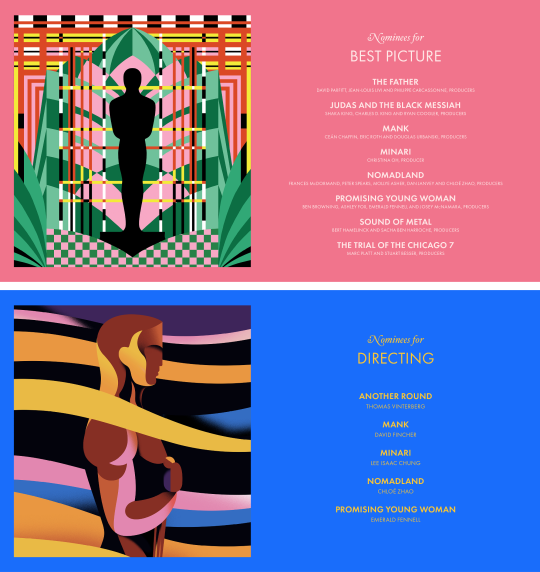
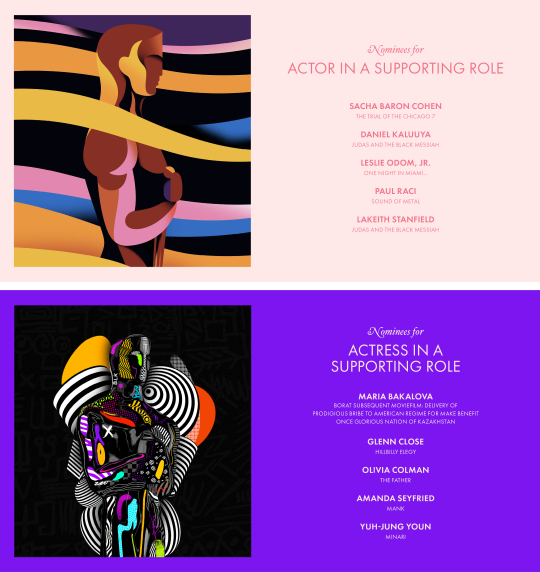

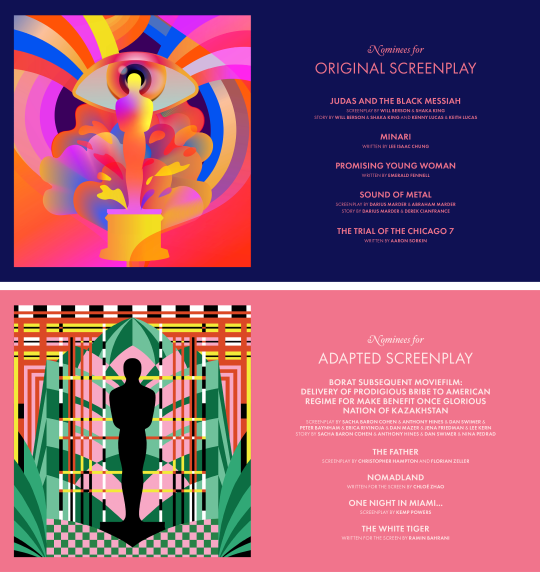

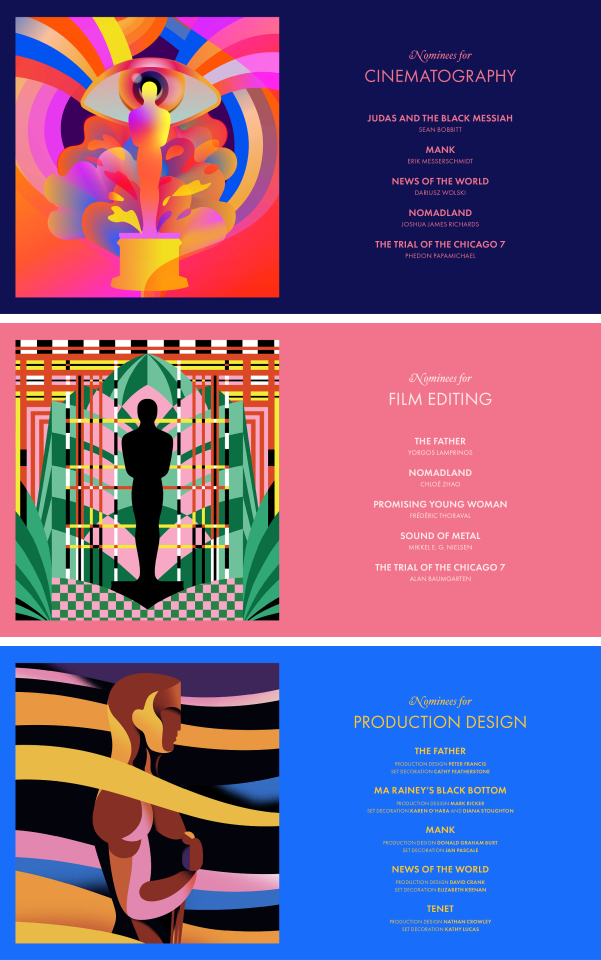
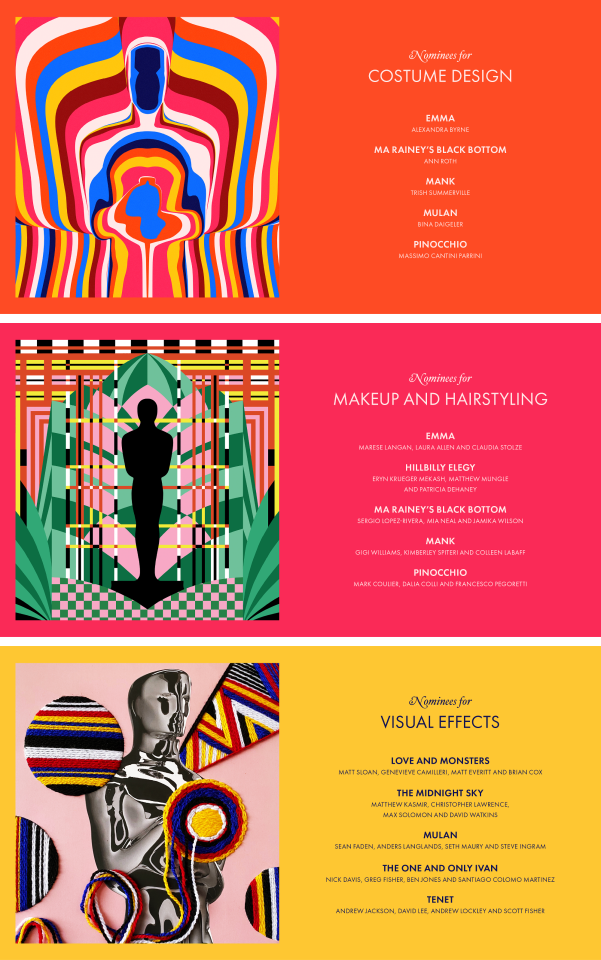
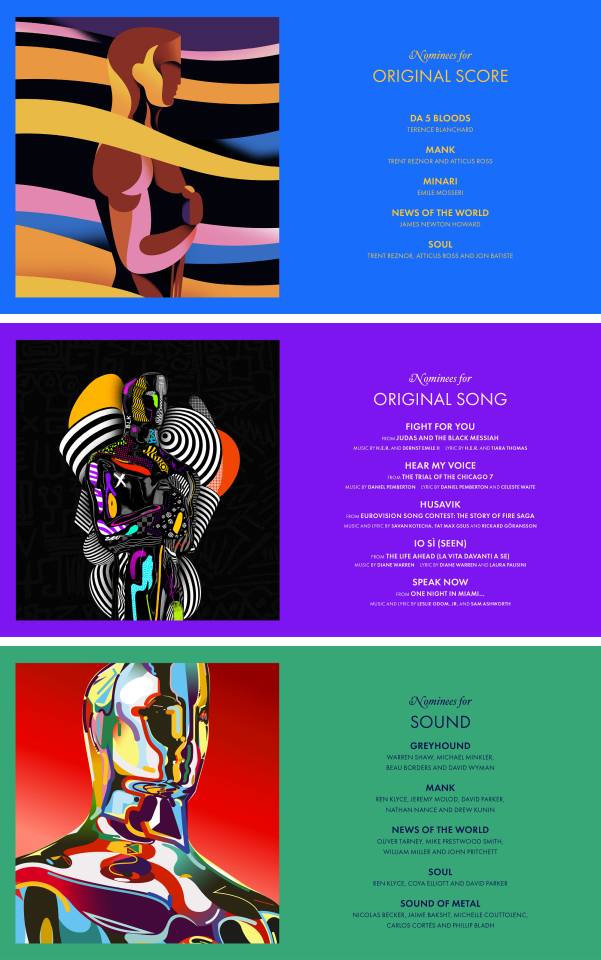
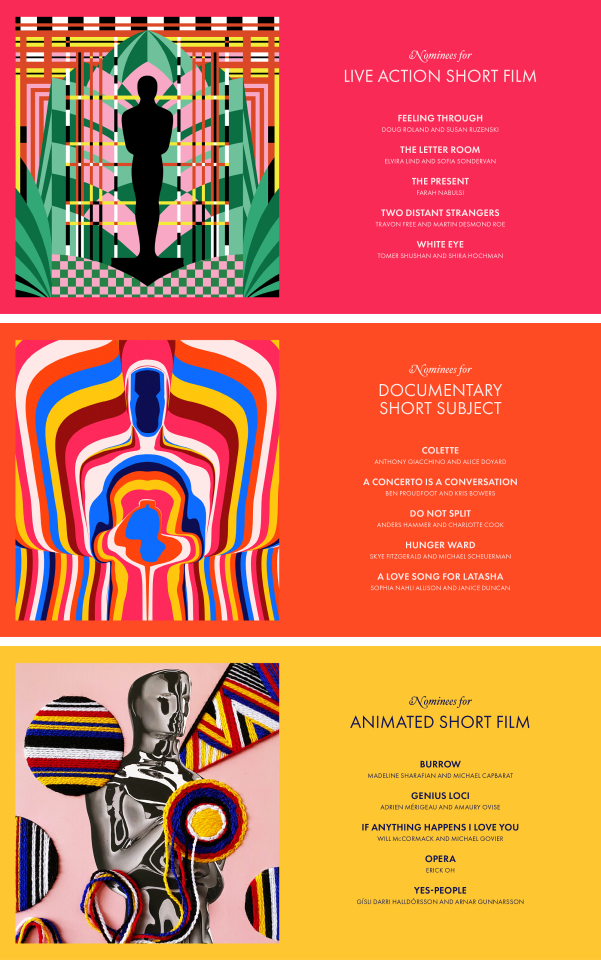
93rd Academy Awards Nominees
BEST PICTURE
The Father – David Parfitt, Jean-Louis Livi, and Philippe Carcassonne
Judas and the Black Messiah – Shaka King, Charles D. King, and Ryan Coogler
Mank – Ceán Chaffin, Eric Roth, and Douglas Urbanski
Minari – Christina Oh
Nomadland – Frances McDormand, Peter Spears, Mollye Asher, Dan Javey, and Chloé Zhao
Promising Young Woman – Ben Browning, Ashley Fox, Emerald Fennell, and Josey McNamara
Sound of Metal – Bert Hamelinick and Sacha Ben Harroche
The Trial of the Chicago 7 – Marc Platt and Stuart Besser
BEST DIRECTOR
Lee Isaac Chung – Minari
Emerald Fennell – Promising Young Woman
David Fincher – Mank
Thomas Vinterberg – Another Round
Chloé Zhao – Nomadland
BEST ACTOR
Riz Ahmed – Sound of Metal as Ruben Stone
Chadwick Boseman (posthumous nominee) – Ma Rainey's Black Bottom as Levee Green
Anthony Hopkins – The Father as Anthony
Gary Oldman – Mank as Herman J. Mankiewicz
Steven Yeun – Minari as Jacob Yi
BEST ACTRESS
Viola Davis – Ma Rainey's Black Bottom as Ma Rainey
Andra Day – The United States vs. Billie Holiday as Billie Holiday
Vanessa Kirby – Pieces of a Woman as Martha Weiss
Frances McDormand – Nomadland as Fern
Carey Mulligan – Promising Young Woman as Cassandra “Cassie” Thomas
BEST SUPPORTING ACTOR
Sacha Baron Cohen – The Trial of the Chicago 7 as Abbie Hoffman
Daniel Kaluuya – Judas and the Black Messiah as Fred Hampton
Leslie Odom Jr. – One Night in Miami... as Sam Cooke
Paul Raci – Sound of Metal as Joe
Lakeith Stanfield – Judas and the Black Messiah as William "Bill" O'Neal
BEST SUPPORTING ACTRESS
Maria Bakalova – Borat Subsequent Moviefilm: Delivery of Prodigious Bribe to American Regime for Make Benefit Once Glorious Nation of Kazakhstan as Tutar Sagdiyev
Glenn Close – Hillbilly Elegy as Bonnie "Mamaw" Vance
Olivia Colman – The Father as Anne
Amanda Seyfried – Mank as Marion Davies
Youn Yuh-jung – Minari as Soon-ja
BEST ORIGINAL SCREENPLAY
Judas and the Black Messiah – Screenplay by Will Berson and Shaka King; Story by Will Berson, Shaka King, Keith Lucas, and Kenny Lucas
Minari – Lee Isaac Chung
Promising Young Woman – Emerald Fennell
Sound of Metal – Screenplay by Darius Marder and Abraham Marder; Story by Darius Marder and Derek Cianfrance
The Trial of the Chicago 7 – Aaron Sorkin
BEST ADAPTED SCREENPLAY
Borat Subsequent Moviefilm: Delivery of Prodigious Bribe to American Regime for Make Benefit Once Glorious Nation of Kazakhstan – Screenplay by Sacha Baron Cohen, Anthony Hines, Dan Swimer, Peter Baynham, Erica Rivinoja, Dan Mazer, Jena Friedman, and Lee Kern; Story by Baron Cohen, Hines, Swimer, and Nina Pedrad; Based on the character Borat Sagdiyev by Baron Cohen
The Father – Christopher Hampton & Florian Zeller, based on the play by Zeller
Nomadland – Chloé Zhao, based on the book by Jessica Bruder
One Night in Miami... – Kemp Powers, based on his play
The White Tiger – Ramin Bahrani, based on the novel by Aravind Adiga
BEST INTERNATIONAL FEATURE FILM
Another Round (Denmark) in Danish – directed by Thomas Vinterberg
Better Days (Hong Kong) in Mandarin – directed by Derek Tsang
Collective (Romania) in Romanian – directed by Alexander Nanau
The Man Who Sold His Skin (Tunisia) in Arabic – directed by Kaouther Ben Hania
Quo Vadis, Aida? (Bosnia and Herzegovina) in Bosnian – directed by Jasmila Žbanić
BEST ANIMATED FEATURE FILM
Onward – Dan Scanlon and Kori Rae
Over the Moon – Glen Keane, Gennie Rin, and Peilin Chou
A Shaun the Sheep Movie: Farmageddon – Richard Phelan, Will Becher, and Paul Kewley
Soul – Pete Docter and Dana Murray
Wolfwalkers – Tomm Moore, Ross Stewart, Paul Young, and Stéphan Roelants
BEST DOCUMENTARY FEATURE
Collective – Alexander Nanau and Bianca Oana
Crip Camp – Nicole Newnham, Jim LeBrecht and Sara Bolder
The Mole Agent – Maite Alberdi and Marcela Santibáñez
My Octopus Teacher – Pippa Ehrlich, James Reed, and Craig Foster
Time – Garrett Bradley, Lauren Domino, and Kellen Quinn
BEST CINEMATOGRAPHY
Judas and the Black Messiah – Sean Bobbitt
Mank – Erik Messerschmidt
News of the World – Dariusz Wolski
Nomadland – Joshua James Richards
The Trial of the Chicago 7 – Phedon Papamichael
BEST FILM EDITING
The Father – Yorgos Lamprinos
Nomadland – Chloé Zhao
Promising Young Woman – Frédéric Thoraval
Sound of Metal – Mikkel E.G. Nielsen
The Trial of the Chicago 7 – Alan Baumgarten
BEST PRODUCTION DESIGN
The Father – Production Design: Peter Francis; Set Decoration: Cathy Featherstone
Ma Rainey's Black Bottom – Production Design: Mark Ricker; Set Decoration: Karen O'Hara and Diana Sroughton
Mank – Production Design: Donald Graham Burt; Set Decoration: Jan Pascale
News of the World – Production Design: David Crank; Set Decoration: Elizabeth Keenan
Tenet – Production Design: Nathan Crowley; Set Decoration: Kathy Lucas
BEST COSTUME DESIGN
Emma – Alexandra Byrne
Ma Rainey’s Black Bottom – Ann Roth
Mank – Trish Summerville
Mulan – Bina Daigeler
Pinocchio – Massimo Cantini Parrini
BEST MAKEUP AND HAIRSTYLING
Emma – Marese Langan, Laura Allen, and Claudia Stolze
Hillbilly Elegy – Eryn Krueger Mekash, Patricia Dehaney, and Matthew Mungle
Ma Rainey's Black Bottom – Matiki Anoff, Mia Neal, and Larry M. Cherry
Mank – Kimberley Spiteri, Gigi Williams
Pinocchio – Dalia Colli, Mark Coulier, and Francesco Pegoretti
BEST VISUAL EFFECTS
Love and Monsters – Matt Sloan, Genevieve Camailleri, Matt Everitt, and Brian Cox
The Midnight Sky – Matthew Kasmir, Christopher Lawren, Max Solomon, and David Watkins
Mulan – Sean Faden, Anders Langlands, Seth Maury, and Steven Ingram
The One and Only Ivan – Nick Davis, Greg Fisher, Ben Jones, and Santiago Colomo Martinez
Tenet – Andrew Jackson, David Lee, Andrew Lockley and
BEST ORIGINAL SCORE
Da 5 Bloods – Terence Blanchard
Mank – Trent Reznor and Atticus Ross
Minari – Emile Mosseri
News of the World – James Newton Howard
Soul – Trent Reznor, Atticus Ross, and Jon Batiste
BEST ORIGINAL SONG
"Fight for You" from Judas and the Black Messiah – Music by H.E.R. and Dernst Emile II; Lyric by H.E.R. and Tiara Thomas
"Hear My Voice" from The Trial of the Chicago 7 – Music by Daniel Pemberton; Lyric by Daniel Pemberton and Celeste Waite
"Husavik" from Eurovision Song Contest: The Story of Fire Saga – Music and Lyric by Savan Kotecha, Fat Max Gsus, and Rickard Göransson
"Io Sì (Seen)" from The Life Ahead – Music by Diane Warren; Lyric by Diane Warren and Laura Pausini
"Speak Now" from One Night in Miami... – Music and Lyric by Leslie Odom Jr. and Sam Ashworth
BEST SOUND
Greyhound – Warren Shaw, Michael Minkler, Beau Borders, and David Wyman
Mank – Ren Klyce, Jeremy Molod, David Parker, Nathan Nance, and Drew Kunin
News of the World – Oliver Tarney, Mike Prestwood Smith, William Miller, and John Pritchett
Soul – Ren Klyce, Coya Elliot, and David Parker
Sound of Metal – Nicolas Becker, Jaime Baksht, Michelle Couttolenc, Carlos Cortes, and Philip Bladh
BEST LIVE ACTION SHORT FILM
Feeling Through – Doug Roland and Susan Ruzenski
The Letter Room – Elvira Lind and Sofia Sondervan
The Present – Farah Nabulsi
Two Distant Strangers – Travon Free and Martin Desmond Roe
White Eye – Tomer Shushan and Shira Hochman
BEST ANIMATED SHORT FILM
Burrow – Madeline Sharafian and Michael Capbarat
Genius Loci – Adrien Mérigeau and Amaury Ovise
If Anything Happens I Love You – Will McCormack and Michael Govier
Opera – Eric Oh
Yes-People – Gísli Darri Halldórsson and Arnar Gunnarsson
BEST DOCUMENTARY SHORT SUBJECT
Colette – Anthony Giacchino and Alice Doyard
A Concerto Is a Conversation – Ben Proudfoot and Kris Bowers
Do Not Split – Anders Hammer and Charlotte Cook
Hunger Ward – Skye Fitzgerald and Michael Shueuerman
A Love Song for Latasha – Sophia Nahali Allison and Janice Duncan
#93rd Academy Awards#Academy Awards#Oscars#The Father#Judas and the Black Messiah#Mank#Minari#Nomadland#Promising Young Woman#Sound of Metal#The Trial of the Chicago 7#Lee Isaac Chung#Emerald Fennell#David Fincher#Thomas Vinterberg#Chloé Zhao#Riz Ahmed#Chadwick Boseman#Anthony Hopkins#Gary oldman#Steven Yeun#Viola Davis#Andra Day#Vanessa Kirby#Frances McDormand#Carey Mulligan#Sacha Baron Cohen#Daniel Kaluuya#Leslie Odom Jr#Paul Raci
215 notes
·
View notes
Text
3 notes
·
View notes
Text
93rd Academy Awards: The List.
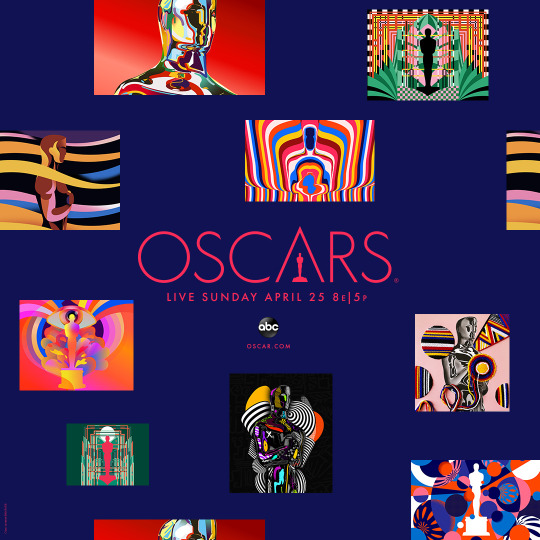
Best Picture
· Nomadland – Mollye Asher, Dan Janvey, Frances McDormand, Peter Spears and Chloé Zhao
o The Father – Philippe Carcassonne, Jean-Louis Livi and David Parfitt
o Judas and the Black Messiah – Ryan Coogler, Charles D. King and Shaka King
o Mank – Ceán Chaffin, Eric Roth and Douglas Urbanski
o Minari – Christina Oh
o Promising Young Woman – Ben Browning, Emerald Fennell, Ashley Fox and Josey McNamara
o Sound of Metal – Bert Hamelinck and Sacha Ben Harroche
o The Trial of the Chicago 7 – Stuart M. Besser and Marc Platt
Best Director
· Chloé Zhao – Nomadland
o Thomas Vinterberg – Another Round
o David Fincher – Mank
o Lee Isaac Chung – Minari
o Emerald Fennell – Promising Young Woman
Best Actor
· Anthony Hopkins – The Father as Anthony
· Riz Ahmed – Sound of Metal as Ruben Stone
· Chadwick Boseman (posthumous) – Ma Rainey's Black Bottom as Levee Green
Gary Oldman – Mank as Herman J. Mankiewicz
· Steven Yeun – Minari as Jacob Yi
Best Actress
· Frances McDormand – Nomadland as Fern
o Viola Davis – Ma Rainey's Black Bottom as Ma Rainey
o Andra Day – The United States vs. Billie Holiday as Billie Holiday
o Vanessa Kirby – Pieces of a Woman as Martha Weiss
o Carey Mulligan – Promising Young Woman as Cassandra "Cassie" Thomas
Best Supporting Actor
· Daniel Kaluuya – Judas and the Black Messiah as Fred Hampton
o Sacha Baron Cohen – The Trial of the Chicago 7 as Abbie Hoffman
o Leslie Odom Jr. – One Night in Miami... as Sam Cooke
o Paul Raci – Sound of Metal as Joe
o Lakeith Stanfield – Judas and the Black Messiah as William "Bill" O'Neal
Best Supporting Actress
· Youn Yuh-jung – Minari as Soon-ja
o Maria Bakalova – Borat Subsequent Moviefilm as Tutar Sagdiyev
o Glenn Close – Hillbilly Elegy as Bonnie "Mamaw" Vance
o Olivia Colman – The Father as Anne
o Amanda Seyfried – Mank as Marion Davies
Best Original Screenplay
· Promising Young Woman – Emerald Fennell
o Judas and the Black Messiah – Screenplay by Will Berson and Shaka King; Story by Berson, King, Keith Lucas and Kenny Lucas
o Minari – Lee Isaac Chung
o Sound of Metal – Screenplay by Abraham Marder and Darius Marder; Story by Derek Cianfrance and D. Marder
o The Trial of the Chicago 7 – Aaron Sorkin
Best Adapted Screenplay
· The Father – Christopher Hampton and Florian Zeller, based on the play by Zeller
o Borat Subsequent Moviefilm – Screenplay by Sacha Baron Cohen, Peter Baynham, Jena Friedman, Anthony Hines, Lee Kern, Dan Mazer, Erica Rivinoja and Dan Swimer; Story by Baron Cohen, Hines, Nina Pedrad and Swimer; Based on the character by Baron Cohen
o Nomadland – Chloé Zhao, based on the book by Jessica Bruder
o One Night in Miami... – Kemp Powers, based on his play
o The White Tiger – Ramin Bahrani, based on the novel by Aravind Adiga
Best Animated Feature Film
· Soul – Pete Docter and Dana Murray
o Onward – Dan Scanlon and Kori Rae
o Over the Moon – Peilin Chou, Glen Keane, and Gennie Rin
o A Shaun the Sheep Movie: Farmageddon – Will Becher, Paul Kewley, and Richard Phelan
o Wolfwalkers – Tomm Moore, Stéphan Roelants, Ross Stewart and Paul Young
Best International Feature Film
· Another Round (Denmark) in Danish – directed by Thomas Vinterberg
o Better Days (Hong Kong) in Mandarin – directed by Derek Tsang
o Collective (Romania) in Romanian – directed by Alexander Nanau
o The Man Who Sold His Skin (Tunisia) in Arabic – directed by Kaouther Ben Hania
o Quo Vadis, Aida? (Bosnia and Herzegovina) in Bosnian – directed by Jasmila Žbanić
Best Documentary Feature
· My Octopus Teacher – Pippa Ehrlich, Craig Foster and James Reed
o Collective – Alexander Nanau and Bianca Oana
o Crip Camp – Sara Bolder, Jim LeBrecht and Nicole Newnham
o The Mole Agent – Maite Alberdi and Marcela Santibáñez
o Time – Garrett Bradley, Lauren Domino and Kellen Quinn
Best Documentary Short Subject
· Colette – Alice Doyard and Anthony Giacchino
o A Concerto Is a Conversation – Kris Bowers and Ben Proudfoot
o Do Not Split – Charlotte Cook and Anders Hammer
o Hunger Ward – Skye Fitzgerald and Michael Shueuerman
o A Love Song for Latasha – Sophia Nahali Allison and Janice Duncan
Best Live Action Short Film
· Two Distant Strangers – Travon Free and Martin Desmond Roe
o Feeling Through – Doug Roland and Susan Ruzenski
o The Letter Room – Elvira Lind and Sofia Sondervan
o The Present – Ossama Bawardi and Farah Nabulsi
o White Eye – Shira Hochman and Tomer Shushan
Best Animated Short Film
· If Anything Happens I Love You – Michael Govier and Will McCormack
o Burrow – Michael Capbarat and Madeline Sharafian
o Genius Loci – Adrien Mérigeau and Amaury Ovise
o Opera – Erick Oh
o Yes-People – Arnar Gunnarsson and Gísli Darri Halldórsson
Best Original Score
· Soul – Trent Reznor, Atticus Ross and Jon Batiste
o Da 5 Bloods – Terence Blanchard
o Mank – Trent Reznor and Atticus Ross
o Minari – Emile Mosseri
o News of the World – James Newton Howard
Best Original Song
· "Fight for You" from Judas and the Black Messiah – Music by D'Mile and H.E.R.; lyric by H.E.R. and Tiara Thomas
o "Hear My Voice" from The Trial of the Chicago 7 – Music by Daniel Pemberton; lyric by Celeste and Pemberton
o "Husavik" from Eurovision Song Contest: The Story of Fire Saga – Music and lyric by Rickard Göransson, Fat Max Gsus and Savan Kotecha
o "Io sì (Seen)" from The Life Ahead – Music by Diane Warren; lyric by Laura Pausini and Warren
o "Speak Now" from One Night in Miami... – Music and lyric by Sam Ashworth and Leslie Odom Jr.
Best Sound
· Sound of Metal – Jaime Baksht, Nicolas Becker, Philip Bladh, Carlos Cortés and Michelle Couttolenc
o Greyhound – Beau Borders, Michael Minkler, Warren Shaw and David Wyman
o Mank – Ren Klyce, Drew Kunin, Jeremy Molod, Nathan Nance and David Parker
o News of the World – William Miller, John Pritchett, Mike Prestwood Smith and Oliver Tarney
o Soul – Coya Elliot, Ren Klyce and David Parker
Best Production Design
· Mank – Production Design: Donald Graham Burt; Set Decoration: Jan Pascale
o The Father – Production Design: Peter Francis; Set Decoration: Cathy Featherstone
o Ma Rainey's Black Bottom – Production Design: Mark Ricker; Set Decoration: Karen O'Hara and Diana Stoughton
o News of the World – Production Design: David Crank; Set Decoration: Elizabeth Keenan
o Tenet – Production Design: Nathan Crowley; Set Decoration: Kathy Lucas
Best Cinematography
· Mank – Erik Messerschmidt
o Judas and the Black Messiah – Sean Bobbitt
o News of the World – Dariusz Wolski
o Nomadland – Joshua James Richards
o The Trial of the Chicago 7 – Phedon Papamichael
Best Makeup and Hairstyling
· Ma Rainey's Black Bottom – Sergio Lopez-Rivera, Mia Neal and Jamika Wilson
o Emma. – Laura Allen, Marese Langan and Claudia Stolze
o Hillbilly Elegy – Patricia Dehaney, Eryn Krueger Mekash and Matthew W. Mungle
o Mank – Colleen LaBaff, Kimberley Spiteri and Gigi Williams
o Pinocchio – Dalia Colli, Mark Coulier and Francesco Pegoretti
Best Costume Design
· Ma Rainey's Black Bottom – Ann Roth
o Emma. – Alexandra Byrne
o Mank – Trish Summerville
o Mulan – Bina Daigeler
o Pinocchio – Massimo Cantini Parrini
Best Film Editing
· Sound of Metal – Mikkel E.G. Nielsen
o The Father – Yorgos Lamprinos
o Nomadland – Chloé Zhao
o Promising Young Woman – Frédéric Thoraval
o The Trial of the Chicago 7 – Alan Baumgarten
Best Visual Effects
· Tenet – Scott R. Fisher, Andrew Jackson, David Lee and Andrew Lockley
o Love and Monsters – Genevieve Camailleri, Brian Cox, Matt Everitt and Matt Sloan
o The Midnight Sky – Matthew Kasmir, Chris Lawrence, Max Solomon and David Watkins
o Mulan – Sean Andrew Faden, Steve Ingram, Anders Langlands and Seth Maury
o The One and Only Ivan – Nick Davis, Greg Fisher, Ben Jones and Santiago Colomo Martinez
2 notes
·
View notes
Text
Week 9
Watch episodes 1 and 2 of the series ‘The Genius of Photography’:
Episodes 1 FIXING THE SHADOWS questions
1. What year was photography ‘invented’?
1839
2. Who were the key people (one English, one French)?
French: Louis Daguerre
English: Henry Fox Talbot
3. What is the main difference between the two systems?
Daguerre fixed the image to a smooth, mirror-like metal plate. He made disposable(one-off) images. When viewing Daguerre's work, the light was reflected through the image. The light ranges from bright white, which is definitely reflected, to deep black. The biggest drawback is the inability to replicate the original photo. Daguerre is trying to open up a huge market, most personally.
Talbot presented the image on paper, and the way to get the image was from up-side-down to normal look after exposure. Talbot wanted to satisfy people their own desires
4. What do they suggest was the unintended consequence of photography?
The photographs were no longer random, because of how they are cropped, they became intentional.
Photographs revealed the details of the world and told us what should be focused on.
The consequence of the born of photography symbolized the coming new era. It changed the world and the way people understood the world. We entered the world of information and images.
5. What is Edward Muybridge famous for doing?
Motion study
The anatomy and the frozen moment which was interested Muybridge once when he was doing an experiment on the horses.
6. What was the first method of popular sharing of photographs?
The introduction of the card. It was small and easy to be posted.
7. What method did photographers first use in order to claim photography as art?
They instinctively turned to oil paintings for inspiration and confidence. Photographers followed the painters' path to create their work.
8. What company did George Eastman start?
The Eastman Kodak Company.
9. What did he invent (three things)?
The film
Kodak camera
Brownie camera
10. What year was the $1 Brownie camera released?
1900
11. How old was Jacque Henry Lartigue when he was making his family photo albums?
19
12. What were photographic artists doing when snapshots become popular?
They were making differences with vernacular photography.
They tried to make photography as a branch of fine arts, they were doing imitations of drawing and paint makings. The pictorialists were looking at the past, they retreated in terms of the art style and contents. There were no cars or machines or poor people in pictorial pictures.
13. What did Edward Steichen take up during WWII?
Started aerial photograph, precision and sharpness are the main purposes, rather than arty vagaries.
Episodes 2 DOCUMENT FOR ARTISTS questions:
1. What was Karl Blossfeldt’s book from 1925?
Art Forms in Nature
2. What form of recording was he using?
Use the encyclopedic form to record the world typologies. On the shiny commercial paper.
3. Who was the first person to do this?
Anna Atkins
4. What are some of the things Bernd and Hilla Becher photographed?
Blast furnace
Water towers
Some bizarre creatures of industry
5. What did August Sander try to create a typology of in Germany in the 1920s?
Human typology
"The Face of the Times" in 1929
What Sander wanted to speak behind his photos are the chaotic conditions of Germany in the 1920s.
6. What does Alexander Rodchenko believe about photography?
The camera is the tool of the new man and artist.
He used the camera to serve political reality and serve the people.
7. What did he try to change?
Changed the Belly Button Photography, tried to tell people about a different way of photographing the world. He was photographing the new society.
8. What magazine did he start?
USSR en construction
9. What technique did he use in the magazine?
Photomontage
10. What was Eugene Atget doing in Paris?
Documented the city ancient core from back street to shop front.
In the 1920s, he created the unique typology of the old Paris.
Towards the end of his life, he started to capture the undocumentary possibilities of photography. His photos then became to document the different range of reality.
11. What was Man Ray interested in exploring?
Ray was into the area of unreal. He interested in dreams, desires and the mediums unconscious mind.
12. What process did he discover?
Solarization
13. What is the famous photo Man Ray took of a Marcel Duchamp work?
The Large Glass
14. What famous exhibition happened in Stuttgart in 1929?
Film and Photo Show.
15. How did Stalin ‘remove his enemies from history’?
Using black ink on the faces.
16. Who brought Eugene Atget’s negatives to the USA?
Berenice Abbott
17. What organisation did Walker Evans work for in the 1930s before he was sacked in 1937?
The Farm Security Agency.
18. What did he photograph when working for them?
To portray the government positively.
The wife of a sharecropper in 1936
19. What did Bill Brandt photograph during WWII?
A new type of social disorderAir-raid shelters and Londoners
=========================================================================
Planning for the second series
Intention
My general intention for this series still focuses on the idea of showing both the tradition and modernity within the food, examining how food can speak about different cultures.
The tradition of drinking tea is one of the popular cultures of China over the centuries. In terms of showing the traditional side of my work, I think tea itself is already a good medium to speak about its own culture. Tea has a sense of tranquillity, and it indicates the length of history. In order to show the modernity, I decide to use some modern books and flowers as decorations in the backdrops and supported with modern colours of lighting and composition. For me, books are also the representation of the sense of serenity, so I think tea and books will be a great combination.
Reading while having a cup of tea has already started a long time ago in history, until now, in today's society, people also like to brew a pot of tea and read a few pages of a book in their quiet and leisure time. I think this series of photos can reflect people’s modern lifestyle, like what they would do to relax, as well as portraying the peacefulness of that moment.
Planning and preparation

Research on techniques
1. Christina Leopold
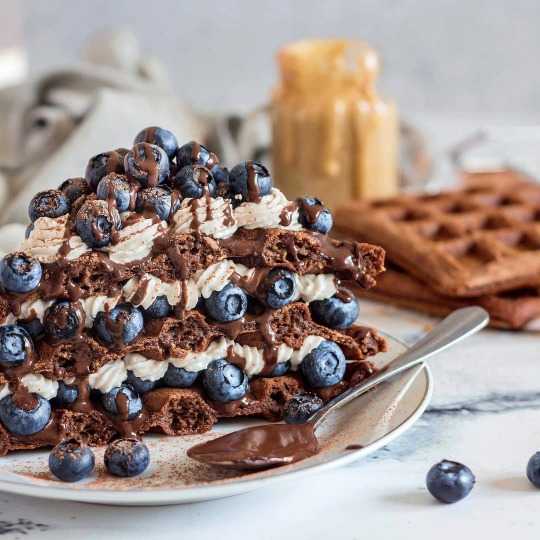
I like the texture and beauty of the food in the foreground. Rather than using the plain backdrops, it is a good idea to include some other relevant objects to construct the photo.
The spoon works as a leading line in this picture. Leopold uses a spoon to lead our eyes to view from the front of the focal point to the rest of the objects.
The colour of the food on the plate corresponds to the colour of the waffle on the background, building up the connection and communication in between.
2. Nikolay Osmachiko

The dark yellow-toned lighting helps a lot with creating the traditional atmosphere. The lighting comes from the top and leaves the shadows formed on the wooden table. The use of lighting lightens up the foreground and makes the teacups look clearly. It also puts the background into darkness and creates this profound depth for viewers.
The act of pouring the tea adds interesting elements and meanings to the photo as well as generating a sense of tradition.
3. Suzy Hazelwood

The combination of books and tea creates a sense of serenity and leisure. I think having this combination in the photos is a great choice.
My thought for the second series is to include some books to build up the atmosphere and meaning of the photos, I think it is a good idea to look at how other commercial photographers have done with the books in their photos. I think having the book opened would generate the feeling that someone is reading it.
Contact sheets

I found that lighting and composition are a bit hard to control due to the limited tools and space, so in the first few shots I was trying to get the good lighting and the right direction of where it should come from.
I especially like IMG 0175 as the depth of field is created and the patterns on the cup are clearly shown.
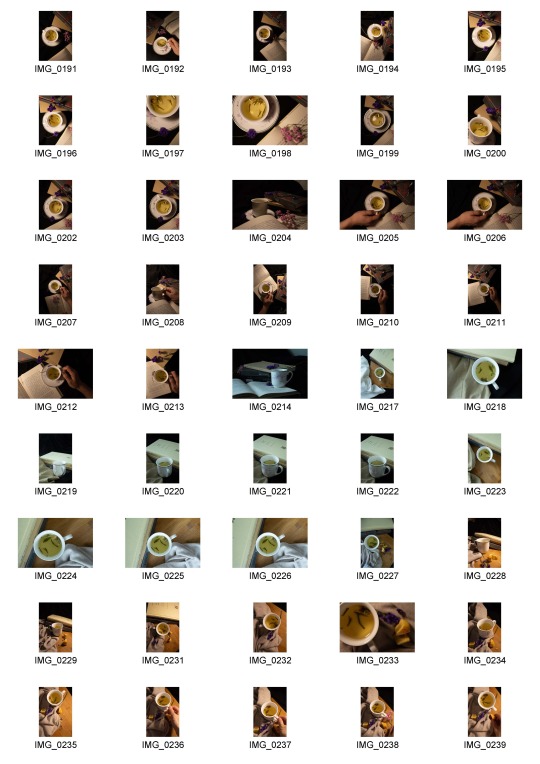
In this contact sheet, I have taken most of the photos from the top angle. I think this angle is successful as it highlights the composition and geometric patterns formed by the props. Also, by including the hand within the pictures allows the photos to be more eye-catching.
I was also testing the lighting and background in this contact sheet. I thought it would be good to use some wooden materials to be the backdrop, however, that didn't turn out as I expected. And I also don't think that natural lighting can be helpful neither.
Reflection
While I was doing the second series, I was also thinking about the final presentation of my work. At the moment, I was thinking about making a web layout to promote food culture. So the style of this series would be generally similar to the previous one, such as using the same lighting, composition, colour and so on. For now, I decided to name this series "Culture - Tea".
Continuing with a similar style, this series was also taken against a pure black background. Normally, when photographing the idea of drinking tea or reading a book, the common thought is to include furniture in the backdrops to generate warm feelings. However, I would like to go against the common thoughts and portray them in my own style. I think it magnifies the content of the subject and the beauty of food. Although it may look plain as there is not much information shown, it produces another mysterious atmosphere that makes people wonder. The simplicity allows the audience to feel a more tranquil atmosphere and pay more attention to the relationship drawn between those subjects.
Geometric shapes appear naturally in black backgrounds. They are made of the vague outline of the flowers, the arrangement of the book and the plate. Taking from the top angle creates an opportunity to portray these geometric lines more directly. The uses of colours and lighting are similar to the previous series.
Books play a big role in portraying this group of photos, they not only make the picture hierarchical and structured but more importantly, they elevate the meaning of the pictures. From my perspective, tea and books have a lot in common. They can both demonstrate the idea of tradition and modernity as they both contain a long history.
Portraying the movement is the primary goal that I am aiming to achieve in this group of photos, as well as trying to show the combination of stillness and movement. So I photographed the interaction between the hand and the object to find that sense of motion. In my planning, I have thought about photographing the idea of pouring water, however, due to the limited space, I have not found a way to carry it out. So I photographed the steam of the tea instead, which I think also turned out quite well.

I'm not sure if the size of the cup is okay in this photo as it might seem to be a bit big. I chose this one because I like the depth of field and the patterns on the cup, helping the audience see and feel the sense of tradition clearly. The flowers in both the foreground and back are also making connections with the patterns on the cups.
My favourite part is the steam, and it looks more stand-out against a black background. I think it's a good way to show the movement and it makes the picture look more vivid, rather than just a still life. While I was adjusting the photo, I didn't make the steam too obvious as I still wanted the teacup to be the main focal point.

I think this one is a good example of showing the benefits of shooting from the top angle. It highlights the composition of objects, and the geometric lines formed on the background. The angle enhances the coordination of the image, allowing the audience to see the radiated pattern on the plate.
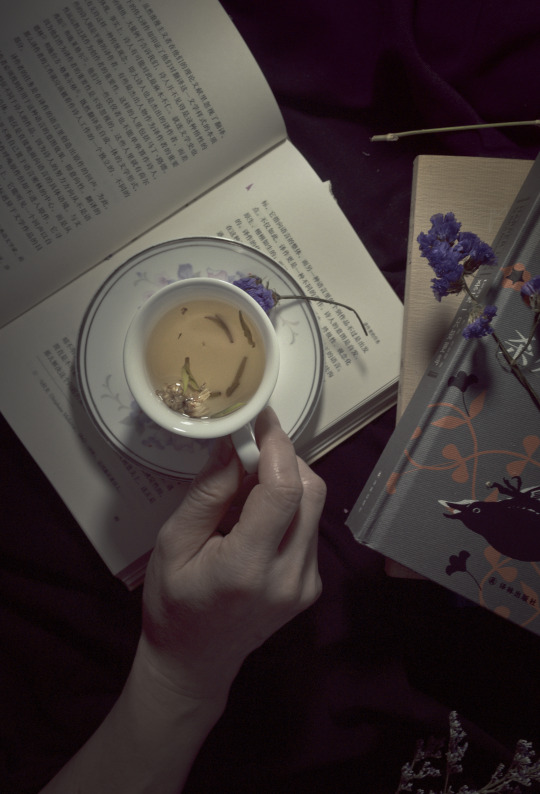
This is a typical picture of the hand interacting with the food. The hand reaches in from the left corner, forming a diagonal line that connects with the edge of the book. The book is placed open on the table with the tea on the top, showing the movement of reading the book. The overall picture shows a sense of tranquillity and leisure, and the gesture of hands enhances the meaning of the photo.
Feedback for moving on
Taking photos of the abstract forms of tea or books. I think I can take some close-ups to show the details of each small part. I'm not sure if I'm going to abstract the item in the next shot, at the moment I prefer a simple close-up shot, but I'm going to try it and see what it looks like.
Rather than looking for something new to take pictures of, I would like to use what I have got already in these two series and develop them. I will mainly focus on showing the details of each element by doing close-ups. I think these new photos can also be used to build up each series.
3 notes
·
View notes
Text
Speculation - Bill Becher Saint Louis FC Head Coach
Speculation - Bill Becher Saint Louis FC Head Coach, what do you think @StLouligans
Billy “Bill” Becher, 2017 HOF Banquet OK, pure speculation but I think it’s worth considering. Bill Becher Saint Louis FC Head Coach. I’ve got all of the reasons why its a great fit. Saint Louis FC have announced Preki’s departure, a decision that was likely made some time ago but just announced. I say that given the rumors we saw last week. Now they are prepared to introduce a new Head Coach…
View On WordPress
#Bill Becher#Billy Becher#Harrisburg City Islanders#Hazelwood East Spartans#Saint Louis FC#Sangamon State University#USL Soccer
0 notes
Photo

Artists Need to Create on the Same Scale that Society Has the Capacity to Destroy: Mare Nostrum Complesso della Chiesa di Santa Maria delle Penitenti Promoter: The Brooklyn Rail Artists Need to Create on the Same Scale that Society Has the Capacity to Destroy: Mare Nostrum features 73 artists of international backgrounds whose works are in response to environmental crisis in the age of climate change. Inspired by Lauren Bon’s neon work—from which this exhibition draws its title—the Brooklyn Rail is organizing, in conjunction with the show, an interdisciplinary program titled 1001 Stories for Survival, which will include free public conversations with artists, scientists, and writers, musical performances, and poetry readings. The exhibition and the progrmaming are co-curated by Phong Bui and Francesca Pietropaolo. Participating artists: Peter Acheson, Yasi Alipour, Shoja Azari & Shahram Karimi, Max Becher & Andrea Robbins, Emma Bee Bernstein, Louis Block, Lauren Bon, Katherine Bradford, Joe Bradley, David Brooks, Dana Buhl, Phong Bui, Bunny Burson, Julian Charrière, Chuck Close, Christian de Boschnek, Iran do Espírito Santo, Aleksandar Duravcevic, Cameron Gainer, Tamara Gonzales, Ron Gorchov, Justin Brice Guariglia, Newton & Helen Mayer Harrison, EJ Hauser, Alfred Jensen, Bill Jensen, Alex Katz, Benjamin Keating, Wolfgang Laib, Chris Larson, Eugene Lemay, Matvey Levenstein, Dean Levin, Margrit Lewczuk, Maya Lin, Chris Martin, Hans Meebush, Jonas Mekas, Cy Morgan, Loren Munk, Hans Namuth, Shirin Neshat, David Novros, Optics Division of The Metabolic Studio (Lauren Bon, Richard Nielsen, Tristan Duke), Renate Ponsold, Diane Pontius, James Powers, James Prosek, Nathlie Provosty, Joanna Pousette-Dart, Joyce Robins, Dorothea Rockburne, Ugo Rondinone, Cordy Ryman, Meyer Schapiro, Cindy Sherman, Amy Sillman, Arthur Simms, Kiki Smith, Sarah Sze, Kazumi Tanaka, Rirkrit Tiravanija, Daniel Turner, Tomas Vu, Merrill Wagner, Jack Whitten, Peter Lamborn Wilson, Lisa Yuskavage — view on Instagram http://bit.ly/31sDfd0
2 notes
·
View notes
Text
August Birthdays
Andy Warhol August 6, 1928 …. https://www.warhol.org/museum/ Bill Jay August 12, 1940 …. https://billjay.com/ Bernd Becher August 20, 1931 …. https://www.moma.org/artists/422 Henri Cartier-Bresson August 22, 1908 …. https://www.henricartierbresson.org/en/ Man Ray August 27 … http://www.manraytrust.com/
View On WordPress
0 notes
Video
DIRTY MONEY from Sinan Sevinç on Vimeo.
Have you ever thought about what kind of journey a dollar bill makes before landing inside your wallet? In an age of COVID-19 with an intense scrutiny on hygiene, no one seems perturbed about handing another person cash. While the world went into lockdown and screamed at each other to keep their distance inside Walmart, cash still made its rounds from hand to hand, from pocket to pocket, from one insanitary surface to another. DIRTY MONEY tells the story of a freshly printed ten-dollar-bill emerging from an ATM and follow its gradual unhygienic demise through the disgusting scenarios it encounters while changing its owner multiple times. But isn’t there a more hygienic solution to rescue Hamilton’s handsome face from mutilation? There certainly is.
CREDITS
Director: Sinan Sevinç & Dominik Ströhle Cinematography: Christopher Behrmann Film Music: Alexander Wolf David Sounddesign: Marco Dahl, Julian Berg Editing: Bela Adami Animation: Mario Bertsch Visual Artist: Matthias Schaudig Production Design: Marie Becher, Maria Schmid Executive Producer: Elisabeth Yili Baumann Assistant Director: Lennard Fricke, Yelyzaveta Davydenko, Philipp Schaeffer Assistant Cinematographer: Kai Bestek, Kevin Brari, Marco Breidenbach, Sina Diehl, Linus Heinzler, Julian Pfaff, Jakob Sinsel Costume Design: Sarah Heidelberger, Mara Laibacher Gaffer: Philip Henze, Dennis Banemann, Garry Sonneborn Lighting Technician: Nils Ecke, Chris Gruber, Christopher Jess, Hanna Lange, Lina Marzin Colorist: Peter Hacker COVID-19 protocol: Philipp Schaeffer, Britt Abrecht Set Runner / COVID-19 protocol: Andreas Scherlinger Production Driver: René Sebastian Colling Production Company: Filmakademie Baden-Württemberg GmbH
CAST: Alie Kaloloh, Evin Sevinç, Duygu Kelesh, Nils Müller, Marco Nestler, Jessica Stamp, Cathy Fink
1 note
·
View note